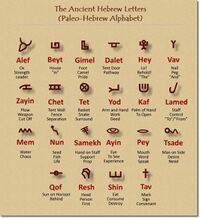Paleo-Hebrew: Difference between revisions
No edit summary |
No edit summary |
||
| Line 5: | Line 5: | ||
<ref>https://archive.org/details/PaleoHebrewScriptures_201312/page/n635/mode/2up</ref> | <ref>https://archive.org/details/PaleoHebrewScriptures_201312/page/n635/mode/2up</ref> | ||
}} | }} | ||
|} | |||
{{th}} | |||
{{1c| {{:No scripture in Paleo-Hebrew}} }} | {{1c| {{:No scripture in Paleo-Hebrew}} }} | ||
|} | |} | ||
Revision as of 07:08, 3 September 2022
No scripture in Paleo-Hebrew [∞]
|
